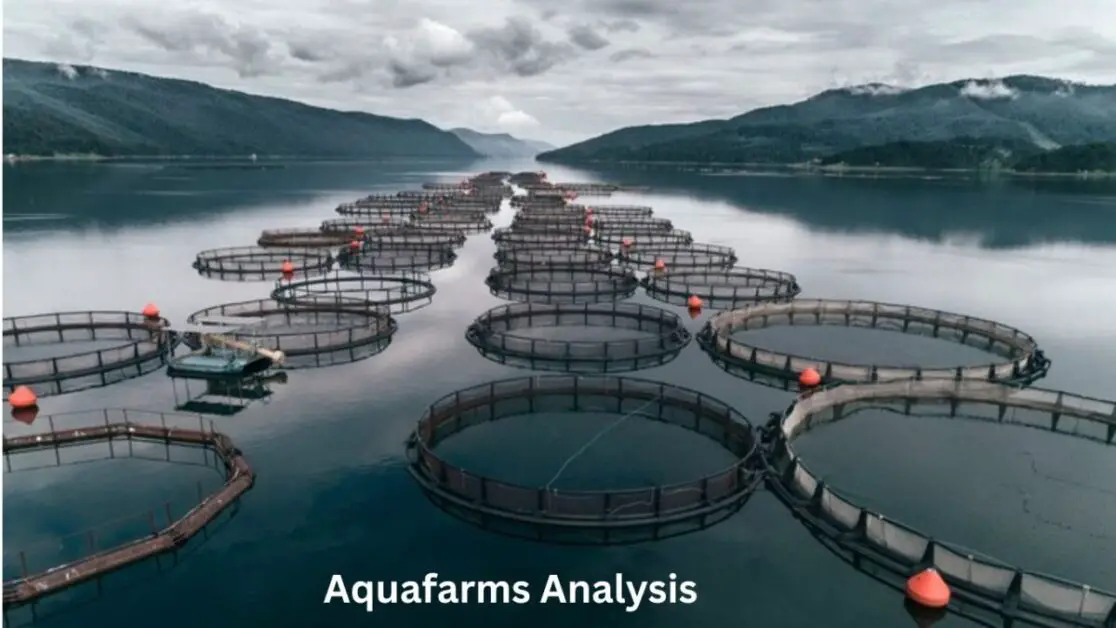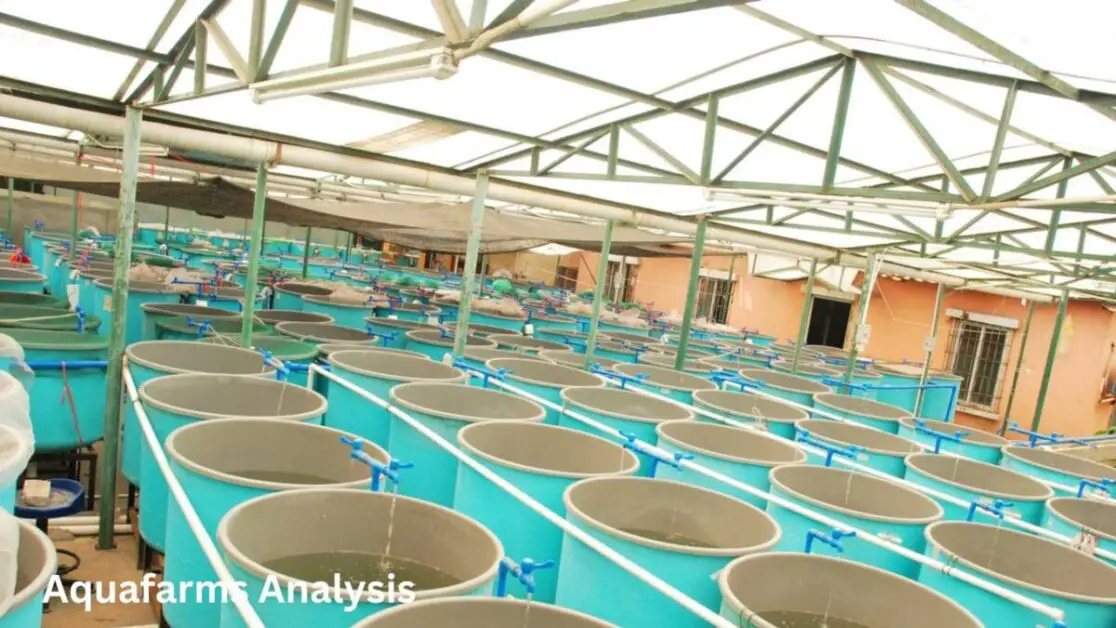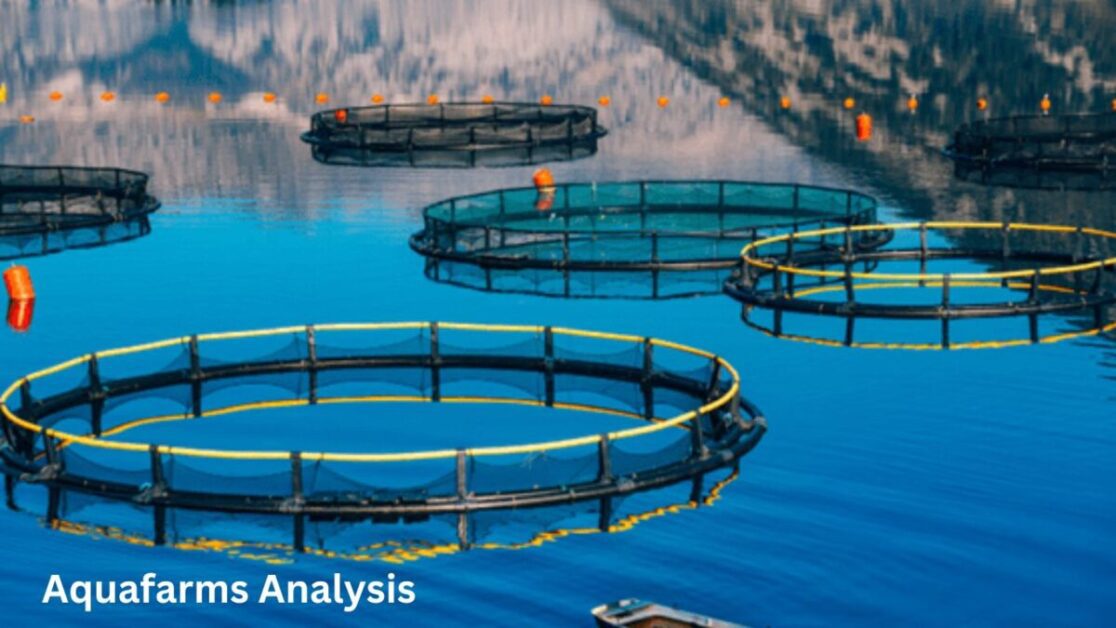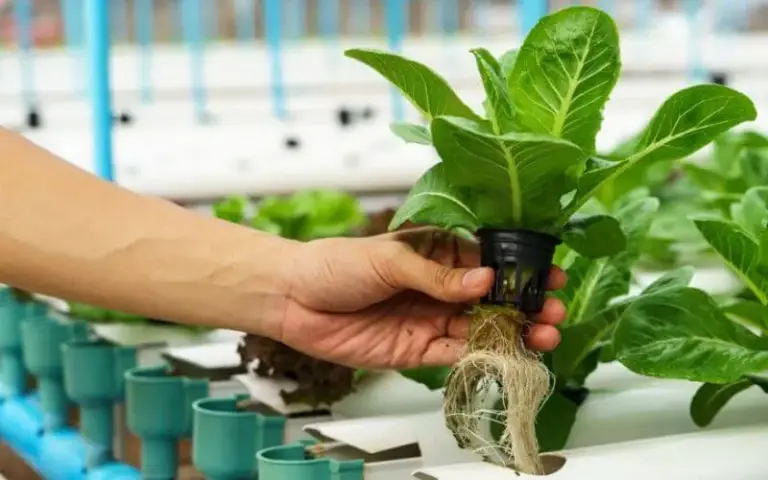Best Aquafarms Analysis: Is it Worth the Investment?
Table of Contents
Aquafarms Basics

Aquafarms, also known as aquaculture, is the practice of cultivating aquatic organisms in controlled environments for commercial purposes. This method allows for the sustainable production of fish, shellfish, and aquatic plants, providing a vital food source for a growing global population. By mimicking natural aquatic habitats, aquafarms aim to optimize growth rates and ensure the health and well-being of their aquatic inhabitants.
One of the key components of aquafarming is water quality management. Maintaining proper water conditions, including temperature, pH levels, and oxygen content, is crucial for the success of an aquafarm. Additionally, farmers must carefully monitor feed quality, stocking densities, and disease prevention strategies to promote the growth and development of their aquatic species. Through innovation and advancements in aquaculture technology, aquafarming continues to play a significant role in meeting the increasing demand for seafood while reducing pressures on wild fish populations.
Types of Aquafarms
Aquafarms come in various types, each designed to cater to specific aquatic species and production goals. One common type is a land-based aquafarm, which is typically located on shorelines or inland areas. These aquafarms rely on tanks, ponds, or recirculating systems to house and cultivate fish, shrimp, or other aquatic organisms. Land-based aquafarms offer more control over the production environment, making it easier to monitor water quality and prevent diseases.
Another type is offshore aquafarms, situated in bodies of water such as oceans or large lakes. Offshore aquafarms utilize floating structures or enclosures to rear marine species like salmon or mussels. These aquafarms benefit from natural water flow and ample space, allowing the organisms to thrive in a more natural habitat. Offshore aquafarms often require robust infrastructure to withstand harsh marine conditions and ensure the safety and sustainability of operations.
Benefits of Investing in Aquafarms
Aquafarming presents a promising investment opportunity for individuals looking to diversify their portfolios. One key benefit of investing in aquafarms is the potential for high profitability. With the global demand for seafood on the rise, aquafarms offer a sustainable solution to meet this growing need. By tapping into this market, investors can capitalize on the increasing demand for seafood products.
Additionally, aquafarming provides a more environmentally friendly alternative to traditional fishing practices. By cultivating fish in controlled environments, aquafarms help to alleviate the pressure on wild fish populations and reduce the impact of overfishing. This sustainable approach not only benefits the ecosystem but also appeals to consumers who are increasingly seeking ethically sourced seafood products.
Potential Risks of Aquafarm Investment
Aquafarm investment, like any other venture, comes with its share of potential risks. One significant risk is disease outbreaks among the aquatic species being farmed. These outbreaks can spread quickly in the close quarters of aquafarms, leading to significant financial losses for the investors. Additionally, fluctuating market prices for seafood products can also pose a risk to aquafarm profitability. Sudden drops in market prices can impact the revenue generated from aquafarm products, affecting the overall return on investment for stakeholders.
Another risk to consider is the environmental impact of aquafarms. Improper waste management and excessive use of resources like water and energy can harm the surrounding ecosystem and lead to regulatory fines or sanctions. Moreover, unpredictable weather events and natural disasters, such as hurricanes or typhoons, can damage aquafarm infrastructure and disrupt production, causing potential financial setbacks for investors.
Market Trends in Aquafarming
Aquafarming is rapidly evolving to meet the increasing demand for sustainable seafood production. One prevalent trend in the aquafarming industry is the shift towards land-based aquaculture systems. These systems utilize recirculating aquaculture technology, which reduces water usage and minimizes environmental impact compared to traditional open-water fish farming methods.
Another emerging market trend in aquafarming is the integration of precision farming techniques and automation technologies. By leveraging sensors, data analytics, and artificial intelligence, aquafarmers can optimize feed management, monitor water quality in real-time, and enhance overall operational efficiency. These advancements not only improve productivity but also ensure better fish welfare and environmental stewardship in aquafarming practices.
Regulations and Policies Impacting Aquafarms
Aquafarms are subject to a variety of regulations and policies that govern their operations to ensure sustainable practices and environmental protection. These rules may cover aspects such as water quality standards, waste management, and species protection. Compliance with these regulations is essential for aquafarm owners to mitigate any potential negative impacts on the surrounding ecosystems and maintain the integrity of their operations.
Moreover, regulatory frameworks play a crucial role in promoting best practices within the aquafarming industry to safeguard both the environment and consumers. By adhering to established guidelines, aquafarms can demonstrate their commitment to responsible production methods and quality assurance, which ultimately enhances consumer trust and the industry’s reputation as a whole.
Environmental Impact of Aquafarms

Aquafarms can have significant environmental impacts, both positive and negative. On the positive side, aquafarms can help reduce pressure on wild fish populations by providing a sustainable source of seafood. Additionally, aquafarms can help protect marine habitats by reducing the need for destructive fishing practices such as trawling.
However, aquafarms also pose potential risks to the environment. Waste from aquafarms, including excess feed and fish waste, can pollute surrounding waters and contribute to oxygen depletion and algal blooms. Additionally, the use of antibiotics and other chemicals in aquaculture operations can have negative impacts on water quality and marine ecosystems. It is essential for aquafarm owners to implement proper waste management practices and sustainable farming methods to minimize these environmental risks.
Economic Viability of Aquafarms
Aquafarms have showcased promising economic viability in recent years due to the increasing demand for sustainable seafood production. With advancements in aquaculture technology and practices, aquafarms are able to efficiently produce a wide variety of fish and seafood products, meeting the demands of the market. The controlled environment of aquafarms allows for year-round production and consistent quality, ensuring steady revenue streams for investors.
Additionally, the growing awareness of the environmental benefits of aquafarming, such as reducing overfishing and preserving marine ecosystems, has attracted investors looking for socially responsible investment opportunities. The potential for high yields and scalability in aquafarming operations further enhances the economic prospects for investors in this sector. Overall, the economic viability of aquafarms presents a lucrative opportunity for those looking to invest in a sustainable and profitable industry.
Technological Advances in Aquafarming
Aquafarming has seen remarkable technological advances in recent years, revolutionizing the industry and improving efficiency. One key innovation is the use of automated feeding systems, which accurately dispense feed based on fish behavior and growth rates. This not only reduces labor costs but also optimizes feed consumption, leading to healthier fish and increased yields.
Furthermore, advancements in water quality monitoring systems have played a crucial role in maintaining optimal conditions for aquatic species. Real-time monitoring of parameters such as oxygen levels, pH, and temperature ensures a stable environment, minimizing stress on the fish and enhancing overall productivity. These technological tools empower aquafarmers to make informed decisions and respond promptly to any deviations, ultimately contributing to sustainable and profitable aquafarming practices.
Cost Analysis of Starting an Aquafarm
Starting an aquafarm involves various costs that aspiring aquafarmers need to consider. Initial expenses typically include obtaining land or acquiring suitable facilities, purchasing equipment such as tanks, filters, aeration systems, and monitoring devices, as well as buying seedlings or juveniles of the desired aquatic species. Additionally, there are costs associated with water supply, electricity for running equipment, feed, labor, and administrative expenses. Moreover, regulatory compliance and insurance costs should not be overlooked in the budgeting process.
Moreover, ongoing operational costs such as feeding, monitoring water quality parameters, disease prevention measures, and maintenance of equipment add to the financial considerations. Aquafarmers need to ensure they have a comprehensive budget that accounts for all these aspects to establish and sustain a successful aquafarming venture in the long run. Proper financial planning from the outset is crucial to avoid unexpected financial burdens that could jeopardize the viability of the aquafarm.
Success Stories in Aquafarming
Aquafarming has proven to be a lucrative and sustainable business venture for many entrepreneurs. One such success story is that of a family-owned aquafarm in coastal Maine, which started as a small-scale operation focused on oyster cultivation. Through innovative farming techniques and a commitment to sustainability, the aquafarm expanded its operations to include a variety of shellfish and seaweed, becoming a key supplier to local restaurants and markets.
In another inspiring success story, a group of aquafarm entrepreneurs in Vietnam transformed abandoned shrimp ponds into a thriving aquaculture business. By implementing modern aquafarming practices and investing in advanced technologies, they were able to increase production efficiency and minimize environmental impact. Today, their aquafarm serves as a model of sustainable aquaculture in the region, providing jobs and economic growth to the community.
Challenges Faced by Aquafarm Owners
Aquafarm owners face a myriad of challenges in ensuring the success and sustainability of their operations. Water quality management stands out as a crucial concern for aquafarm owners. Maintaining adequate levels of oxygen, monitoring pH levels, and controlling factors like temperature and salinity are essential for the health and growth of aquatic organisms. Any fluctuations in these parameters can have detrimental effects on the aquaculture system, leading to potential losses.
Furthermore, disease and pest management pose significant challenges for aquafarm owners. Preventing and controlling diseases in aquatic species require strict biosecurity measures, regular health monitoring, and sometimes the use of antibiotics or vaccines. Additionally, combating pests such as algae or invasive species can be complex and time-consuming, demanding continuous vigilance and effective mitigation strategies. These challenges highlight the importance of proactive management practices and a thorough understanding of the biological dynamics within aquafarming systems.
Future Outlook for Aquafarming Industry
The future outlook for the aquafarming industry appears promising as technology continues to advance, allowing for more efficient and sustainable practices. With the increasing global demand for seafood and the depletion of wild fish stocks, aquafarming offers a viable solution to meet these needs while minimizing environmental impact. Advances in aquaculture technology, such as recirculating systems and automated feeding systems, are making aquafarming more cost-effective and environmentally friendly.
Moreover, the growing awareness of the importance of sustainable food production is driving consumer preference towards responsibly sourced seafood, further bolstering the aquafarming industry. As regulations around aquaculture practices become more stringent and transparent, investors and consumers alike are more inclined to support aquafarms that demonstrate commitment to sustainability and ethical practices. This shift towards environmentally conscious aquafarming practices is expected to drive the industry’s growth in the coming years.
Tips for Successful Aquafarm Investment

When considering an investment in aquafarming, it’s crucial to conduct thorough research and due diligence before diving in. Understanding the specific requirements of the aquaculture system you plan to establish is essential for long-term success. Start by assessing the water quality, location, species selection, and market demand to develop a comprehensive business plan. Consult with experienced aquafarmers, industry experts, and agricultural extension services to gain insights and advice for setting up and managing your aquafarm effectively.
Another key tip for successful aquafarm investment is to stay abreast of technological advancements and best practices in the industry. Innovations in water treatment, recirculating aquaculture systems, automation, and feed formulations can greatly enhance productivity and sustainability. By incorporating cutting-edge technologies and methods into your aquafarm operations, you can increase efficiency, reduce costs, and improve output quality. Regularly attending conferences, workshops, and networking events can also provide valuable knowledge and connections to help you stay ahead in the competitive aquaculture market.
here’s a simple table analyzing the best aquafarms and whether they are worth the investment:
| Aquafarm Name | Location | Production Capacity | Sustainability Practices | Return on Investment (ROI) |
|---|---|---|---|---|
| AquaGrow Farms | Coastal region A | 500 tons/year | Recirculating aquaculture system (RAS), renewable energy sources | High – efficient operations yield quick returns |
| OceanHarvest | Offshore site B | 1000 tons/year | Integrated multi-trophic aquaculture (IMTA), minimal environmental impact | Moderate – initial investment higher due to offshore setup, but steady returns expected |
| EcoFish Aquaculture | Inland region C | 300 tons/year | Closed containment system, organic feed usage | Moderate – sustainable practices attract premium prices, gradual ROI |
| SustainableSeas | Coastal region D | 800 tons/year | Mangrove restoration, low-density farming | High – strong market demand for sustainably sourced seafood |
| AquaAgroTech | Inland region E | 600 tons/year | Hybrid system combining RAS and aquaponics, minimal water usage | High – diversified revenue streams (fish and produce), efficient resource utilization |
Note: ROI can vary depending on factors such as market demand, operational efficiency, initial investment costs, and management strategies. It’s essential to conduct thorough due diligence before making any investment decisions.
Investing in Aquafarms: Navigating Opportunities and Sustainability
Aquaculture, the practice of farming aquatic organisms, has emerged as a crucial industry to meet the growing demand for seafood worldwide. With wild fish stocks depleted and concerns about overfishing and environmental degradation rising, aquafarming presents itself as a sustainable solution to feed a burgeoning global population. However, not all aquafarms are created equal, and investors must carefully evaluate opportunities to ensure both financial returns and environmental sustainability.
The Landscape of Aquafarming:
Aquafarming encompasses a diverse range of practices, from inland fish ponds to offshore cage systems. Each approach carries its own set of advantages and challenges, influenced by factors such as location, species cultured, and production methods employed. In recent years, there has been a notable shift towards more sustainable aquaculture practices, driven by consumer demand for responsibly sourced seafood and increasing regulatory scrutiny.
Identifying Investment Opportunities:
When considering investments in aquafarming, thorough due diligence is essential. Investors should assess several key factors, including the farm’s production capacity, sustainability practices, market demand for the cultured species, and potential risks. Here are some considerations to guide investment decisions:
- Production Capacity: Evaluate the farm’s capacity to meet market demand and scale operations efficiently. Higher production volumes often correlate with greater revenue potential but may require significant upfront investments in infrastructure and technology.
- Sustainability Practices: Sustainable aquafarming practices not only minimize environmental impact but also enhance the long-term viability of the operation. Look for farms that prioritize practices such as closed containment systems, responsible feed sourcing, waste management, and habitat conservation.
- Market Demand: Analyze market trends and consumer preferences to gauge demand for the farm’s products. Consider factors such as the popularity of the cultured species, emerging culinary trends, and the willingness of consumers to pay a premium for sustainably produced seafood.
- Financial Viability: Assess the farm’s financial projections, including revenue forecasts, operating costs, and expected return on investment (ROI). Factor in variables such as feed prices, energy expenses, labor costs, and market volatility to develop a realistic financial model.
Case Studies:
To illustrate the diversity of investment opportunities in aquafarming, let’s explore a few hypothetical case studies:
- AquaGrow Farms: Located in a coastal region, AquaGrow Farms utilizes recirculating aquaculture systems (RAS) and renewable energy sources to produce 500 tons of seafood annually. With a strong focus on sustainability and efficient operations, AquaGrow Farms offers investors a high ROI potential.
- EcoFish Aquaculture: Operating in an inland region, EcoFish Aquaculture employs closed containment systems and organic feed usage to produce 300 tons of seafood per year. While the farm’s sustainable practices attract premium prices, investors can expect a moderate ROI due to gradual revenue growth.
- SustainableSeas: Situated in a coastal region, SustainableSeas emphasizes mangrove restoration and low-density farming practices to produce 800 tons of seafood annually. With a strong market demand for sustainably sourced seafood, investors can anticipate a high ROI from this environmentally conscious operation.
Investing in aquafarming offers promising opportunities for financial returns while supporting sustainable food production. By carefully evaluating factors such as production capacity, sustainability practices, market demand, and financial viability, investors can identify lucrative investment opportunities in this rapidly evolving industry. Moreover, by prioritizing environmental sustainability, investors can contribute to the preservation of marine ecosystems and the long-term health of our planet. As with any investment, conducting thorough due diligence and seeking guidance from industry experts are essential steps to mitigate risks and maximize returns in the dynamic world of aquafarming.
Conclusion and Final Thoughts
Aquafarming presents a promising avenue for sustainable food production with its array of benefits, including increased food security, reduced pressure on wild fish populations, and efficient land use. However, navigating the aquafarming industry requires a thorough understanding of the potential risks involved, such as disease outbreaks, environmental impacts, and market fluctuations. By staying informed about market trends, regulations, and technological advances, aquafarm investors can mitigate these risks and capitalize on the industry’s potential for growth.
As the aquafarming industry continues to evolve, fostering economic viability and innovation, it is essential for aquafarm owners to address challenges such as securing funding, maintaining water quality, and complying with regulatory standards. In light of these challenges, success stories within the aquafarming sector highlight the resilience and adaptability of industry players. Looking ahead, a proactive approach to addressing these challenges, coupled with strategic investments and adherence to best practices, will shape a promising future for the aquafarming industry.
How can I ensure the success of my aquafarm investment?
To ensure the success of your aquafarm investment, it is important to thoroughly research market trends, stay informed of regulations and policies impacting aquafarms, utilize technological advances, and carefully analyze the costs involved in starting and maintaining an aquafarm.
What are some common challenges faced by aquafarm owners?
Some common challenges faced by aquafarm owners include fluctuating market prices, environmental concerns, regulatory hurdles, competition from other aquafarms, and issues related to water quality and sustainability.
What are some tips for successful aquafarm investment?
Some tips for successful aquafarm investment include diversifying your aquafarm products, staying updated on industry trends, building strong relationships with suppliers and buyers, implementing sustainable practices, and seeking out mentorship from experienced aquafarm owners.
What is the future outlook for the aquafarming industry?
The aquafarming industry is expected to continue growing due to increasing demand for seafood, technological advancements in aquaculture practices, and a growing focus on sustainable food production. However, challenges such as environmental concerns and regulatory changes may impact the industry’s future trajectory.







